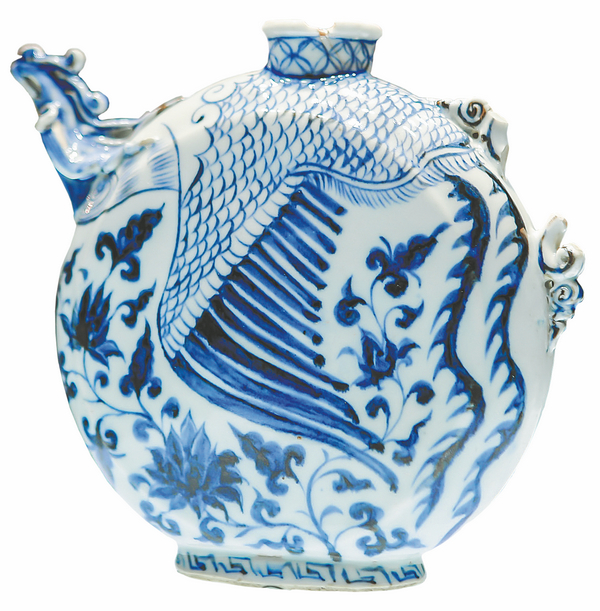

Qinghua (blue-and-white) porcelain is among the brightest jewels of Chinese artwork.
Discerning collectors view it as a lifetime goal to own examples of the fine, centuries-old pottery, which, under a layer of creamy glaze, bears decorative patterns created using a vivid cobalt pigment on a white base.
It is believed that kilns in Gongxian county, in what is today's Henan province, began to make qinghua ceramics in the ninth century, and by the 14th century, workshops in Jingdezhen, Jiangxi province, achieved a mastery of technique and artistry in the production of such ceramics.
The porcelain gained such widespread popularity among diverse social strata that, over time, it has featured in literature, films, TV series and pop culture-the most well-known being a song by Jay Chou titled Qing Hua Ci (blue-and-white porcelain).
The history of qinghua ceramics is now being displayed at Memoirs of Cobalt, an exhibition at Poly Art Museum in Beijing. The show reviews the origin and evolution of the blue-and-white ceramic. It brings together dozens of pottery shards, from as early as the Tang Dynasty (618-907), as well as fine examples of qinghua porcelain from the Yuan (1271-1368) and Ming (1368-1644) dynasties, when the ceramics became known outside China.
Li Yizhou from Beijing Poly International Auction's department of Chinese artworks says qinghua porcelain is such a far-reaching symbol of influence that even people who know little about Chinese culture would be able to recognize it.
"It is not only a treasure of the Chinese civilization, but also testimony to the cultural exchanges between China and the West through the centuries," Li says.